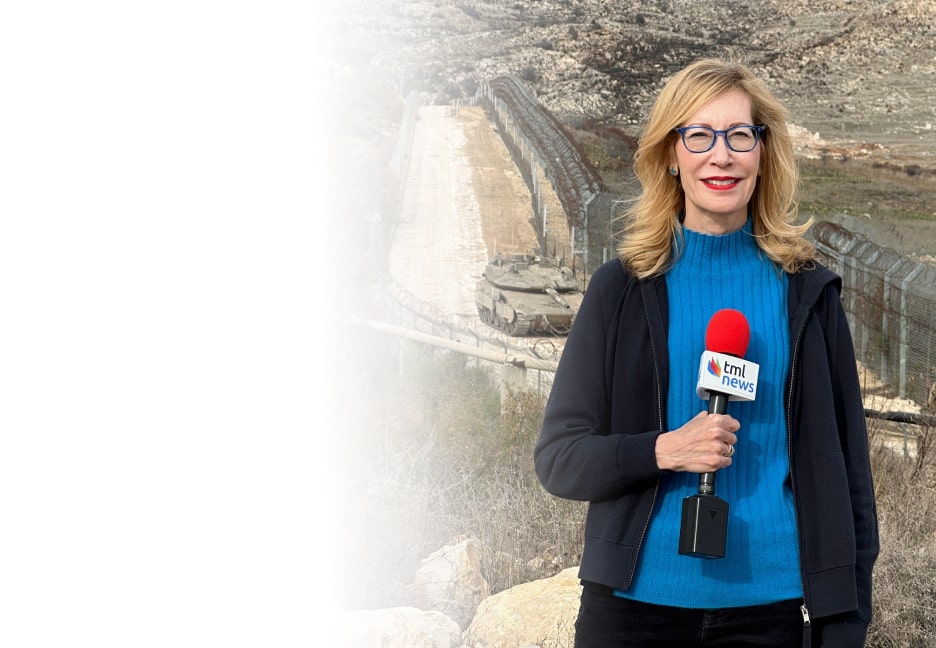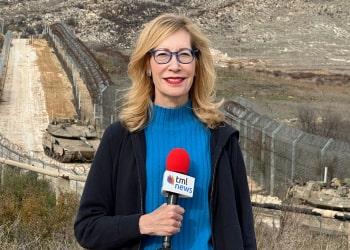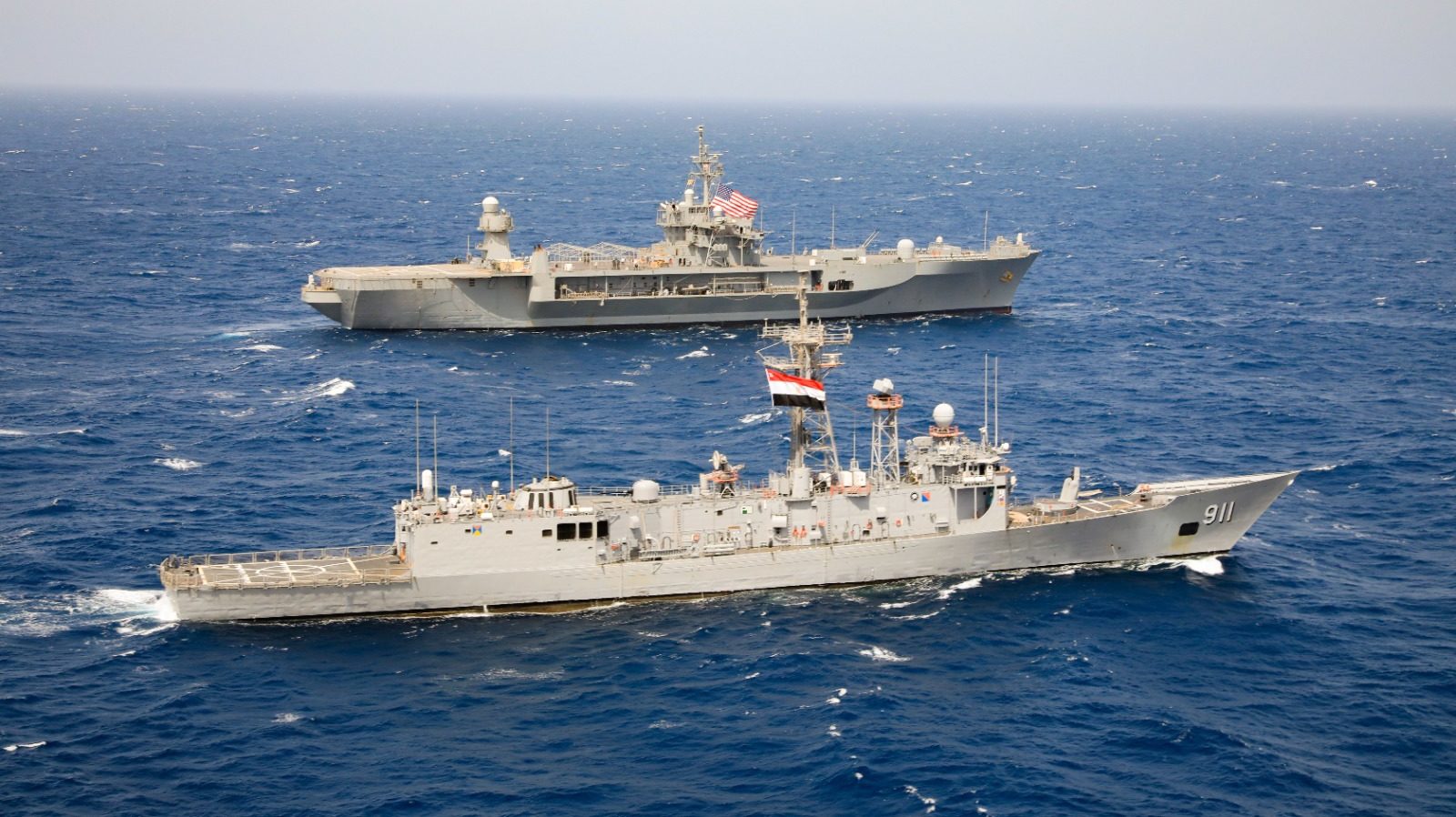US Navy Extends Activities in Middle East in Cooperation With Allies
Israel remains on the outside of the world’s largest maritime partnership, but it could be to its benefit, expert says
The diplomatic interests of the United States and its most important Gulf allies seem, as of late, to be an ocean apart. But the US appears to want to bridge that gap in the waters themselves.
The creation of a new naval multinational task force dedicated to the security of the Red Sea waters, under the auspices of the US Naval Forces Central Command (NAVCENT), has helped to clamp down on arms smuggling to the Houthi rebels in Yemen, just as Saudi Arabia and the United Arab Emirates have voiced strong displeasure with the American response – or lack thereof – to Houthi attacks on the Saudis and Emiratis; criticism of the allies’ handling of the war against the Iran-backed Houthis; and anger at the US handling of negotiations with Iran over its nuclear program.
But the members of the naval task force have been able to put their differences aside for the good of the region.
“We have for decades and we continue to have an excellent relationship with Saudi Arabia. We have a very large contingent of Saudi navy personnel here at the (Bahraini-based 5th Fleet) headquarters as part of both the Combined Maritime Forces and as well as the International Maritime Security Construct, the operational arm of which is called Task Force Sentinel. We’re very proud of that,” Vice Admiral Brad Cooper, commander of US Naval Forces Central Command, US Fifth Fleet and Combined Maritime Forces, told reporters in a briefing on Thursday.
Cooper said that over the last several years the Saudis have commanded multiple task forces within the Combined Maritime Forces and that this summer a Saudi officer will lead the Combined Task Force 150, which oversees maritime security operations in the North Arabian Sea and Gulf of Oman.
“On a day-to-day basis, we work very closely together. And if I just look back, even as recently as six months ago, we completed a very large bilateral exercise in the Red Sea with the Saudis which was highly successful, and then just in the next couple of weeks we’ll put our teams together to plan the next large bilateral exercise that will be held in the Arabian Gulf. So, we’re excited about that,” he also said.
NAVCENT’s area of operations stretches along 5,000 miles of coastline through three strategic chokepoints from the Suez Canal, down the Red Sea, around the Gulf of Aden, into the Indian Ocean up into the North Arabian Sea and Gulf of Oman, and into the Arabian Gulf.
The new multinational task force, Combined Task Force 153, or CTF 153, which was announced last month, aims to target those smuggling coal, drugs, weapons and people in the Red Sea, building on NAVCENT’s counter-smuggling operations. These operations led to a spike in seizures of arms and drugs last year, with the interdiction of illegal drugs worth $500 million, along with the seizure of 9,000 weapons being smuggled along routes historically used to unlawfully supply the Houthis in Yemen, according to NAVCENT. The drug and weapons seizure figures were, respectively, four times and three times as high as in the previous year. Most of the arms that were seized are believed to have originated from Iran.
“Given those successes, we have applied them to a new model that’s going to be focused more vibrantly than we have done in the past on the vital strategic choke points that stretch in this particular case from the Suez Canal down the Red Sea to the Bab el-Mandeb. And the operating area for this task force extends to the Gulf of Aden and basically ends at the Oman-Yemen border… . I’m quite optimistic about the future and their effectiveness to enforce maritime security,” said Cooper.
NAVCENT’s Combined Maritime Forces is made up of 34 nations, and already has three legacy task forces operating under it. Task Force 150 operates in the Sea of Oman and the Indian Ocean, where it conducts security operations ensuring that legitimate commercial shipping can move throughout the region, free from non-state threats. Combined Task Force 151 was established in 2009 to focus on countering piracy and armed robbery at the Horn of Africa and on the Indian Ocean, and Combined Task Force 152 was formed in 2004 to enhance regional maritime security cooperation and to counter illicit activities by non-state actors in the Arabian Gulf waters.
With such a vast area of coverage and growing threats, NAVCENT has turned its focus to unmanned systems and artificial intelligence discovery, with the September 2021 establishment of Task Force 59 in Bahrain. NAVCENT began operating the Saildrone Explorer unmanned surface vessel (USV) in the Arabian Gulf in late January, expanding the US 5th Fleet’s integration of new unmanned systems. The task force also held at-sea evaluations of new Mantas T-12 and Devil Ray T-38 USVs off the coast of Bahrain.
This holiday season, give to:
Truth and understanding
The Media Line's intrepid correspondents are in Israel, Gaza, Lebanon, Syria and Pakistan providing first-person reporting.
They all said they cover it.
We see it.
We report with just one agenda: the truth.


“I believe that we are on the cusp of an unmanned technological revolution, and this calls for regional navies to work together more closely. Unmanned systems with artificial intelligence allow us to simply put more eyes out on the water that I said before that we just have not had in the past. Having better awareness of what’s happening in these waters simply allows us and enables us to better respond if someone warrants our attention,” said Cooper.
The unmanned surface vessels have remained out at sea for more than a hundred days at a time, Cooper said.
“This is unimaginable previously to have platforms with these capabilities at sea for so long with no fuel requirement and no maintenance. It’s just not possible for a crewed ship to be out that long without significant logistics support,” he explained. “We’ve also seen that combining these drones with artificial intelligence allows us to map the waters around them and really establish a pattern of life, which then allows you to better detect smuggling or other malign activities such as illegal fishing or anything else unusual.”
This, Cooper said, allows the task force to maintain maritime security “in a more vibrant manner.”
“And they do this by sending the information that they detect either by radar or by camera using artificial intelligence back to a command center, where a human being decides what to do. It’s very strong and powerful and is working well,” he said, highlighting February’s IMX 2022, when 60 nations and international organizations gathered in the Middle East to conduct the largest unmanned maritime exercise in the world.
Israel’s integration into NAVCENT – the naval element of US Central Command (CENTCOM) – continues, following decisions by both the Trump and Biden administrations to move Israel out of its longtime home in the European Command. But Israel has not yet joined the Combined Maritime Forces (CMF), a 34-nation maritime partnership that is the largest in the world and one that Egypt joined last year. CMF also includes Bahrain, Iraq, Jordan, Kuwait, Qatar, Saudi Arabia, Turkey, UAE and Yemen.
Professor Shaul Chorev, a retired Israeli navy rear admiral and former deputy chief of Israeli naval operations, told The Media Line that joining the Combined Maritime Forces might not be in Israel’s best interest.
“Since Israel joined CENTCOM, the regional relationship has been enhanced. It has a good relationship with the 5th Fleet. If Israel has very good coordination with the US and its partners, then it’s sufficient for Israel,” said Chorev, a professor in the International Relations division of the School of Political Science, University of Haifa and the director of the Haifa Research Center for Maritime Policy and Strategy.
For example, Chorev says, “Task Force 151 deals with piracy, which doesn’t involve Israel. Task Force 150 deals more with terrorism, but it has countries like Pakistan participating, which may not be ready to incorporate Israel. The task of commander of the joint force rotates, as well, and I don’t know if it will be good for Israel for a country like Pakistan to command such a force.”
Cooper was non-committal when queried about Israel’s future membership in CMF.
“Today, Israel is not a member of CMF, and I would defer to Israel in terms of what their national decision would be going forward,” Cooper said in response to a question from The Media Line about Israel’s potential participation.
“But what I would say about CMF is the common bond and what knits everyone together is a commitment to the international rules-based order at sea, and I’m very proud to say that the nations who are part of this are deeply committed to that. And I would expect, as I mentioned before, as we look further into the year and next year, we’ll have more nations joining,” Cooper also said.
Chorev, though, feels Israel’s incorporation into other elements of NAVCENT already fulfills its national interests.
“I’m also not sure that joining CMF is in the interest of Israel because of the size of the Israeli navy, since all these countries will have to send ships. Any issues in terms of a lack of freedom of navigation caused by Iran can be compensated for by the 5th Fleet,” he said.

